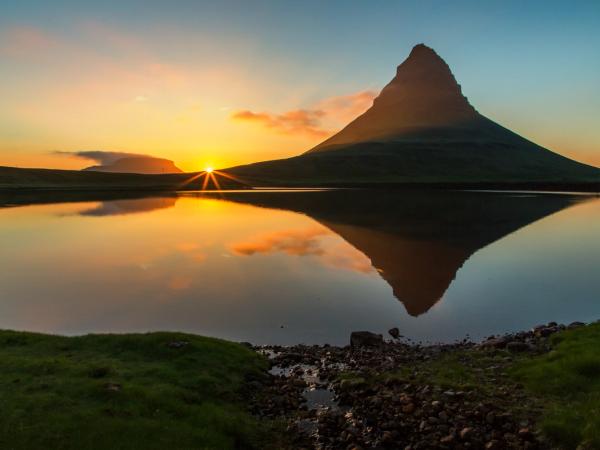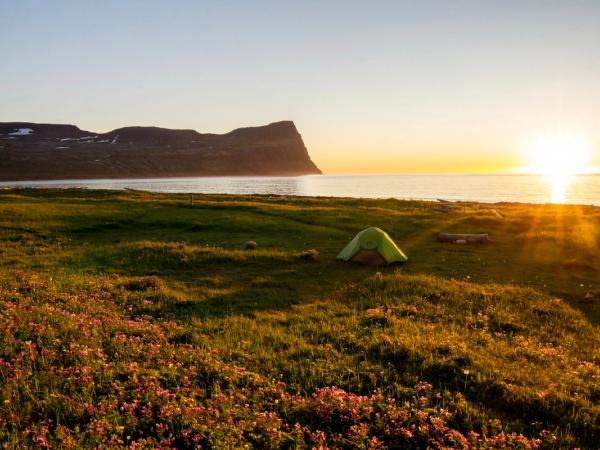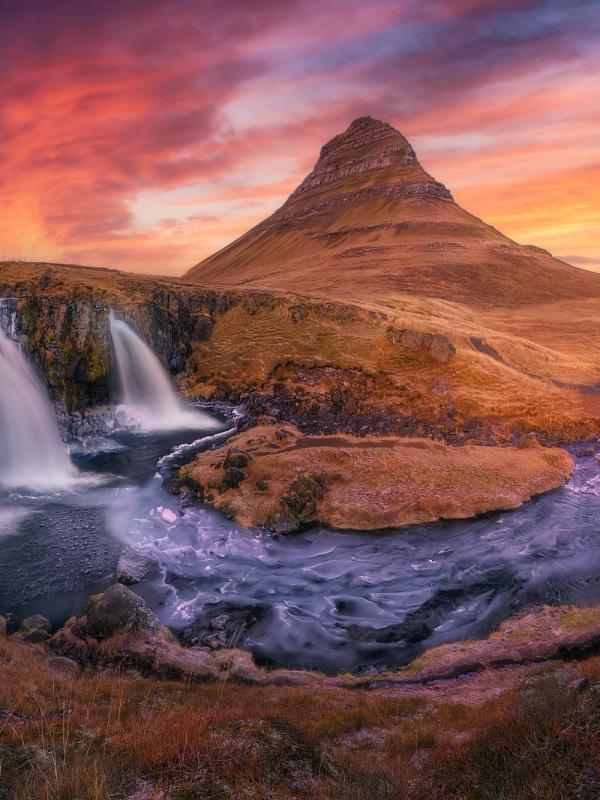
Midnight Sun in Iceland: Experience Endless Daylight in the Land of Fire and Ice
Ever stood outside at midnight with the sun still shining? In Iceland during summer, this isn't a dream—it's everyday life. The Midnight Sun turns Iceland into a place where time seems to stop, where waterfalls sparkle in golden light at 2 AM, and where your adventures don't need to end because it's dark.
Iceland sits close to the Arctic Circle, making it one of the best spots to see this natural wonder. The never-ending daylight is perfect for exploring the country's amazing landscapes—from waterfalls to black sand beaches—without worrying about nightfall.
This guide covers everything you need to know about experiencing the Midnight Sun in Iceland, from when to visit to what to do and how to get ready.
What is the Midnight Sun?
The Midnight Sun is exactly what it sounds like: the sun still visible at midnight. Because Iceland sits just south of the Arctic Circle, during summer months the sun never fully sets. Instead, it dips toward the horizon before rising again, giving you almost 24 hours of daylight.
This happens because the Earth's tilt is 23.4 degrees relative to its orbital plane around the Sun. During summer in the Northern Hemisphere, the North Pole tilts toward the sun, causing areas near the Arctic Circle to face the sun almost constantly. The result is a natural light show that makes Iceland's already beautiful landscapes even more stunning.
While only a small northern part of Iceland (including Grimsey Island) sits within the Arctic Circle, where the sun literally doesn't set at all, the whole country gets extra daylight. Even in Reykjavik, the southernmost major city, summer nights never get truly dark—just a few hours of twilight.
Why Experience the Midnight Sun in Iceland?
Iceland under the Midnight Sun feels like something from a dream. The "golden hour" that photographers love stretches for hours, bathing everything in warm, flattering light.
Picture yourself at Gullfoss waterfall at midnight, watching rainbow mist rise as golden sunlight hits the cascading water. Or imagine soaking in a hot spring under a pink sky at 1 AM. The Midnight Sun makes Iceland's already impressive scenery even more magical.
The biggest perk, as many travelers point out, is the freedom to explore without time limits. The Midnight Sun is great for exploring the country. You can do outdoor exploration all day long.
This extra daylight gives you more time for adventures, whether you're hiking, sightseeing, or watching wildlife. You'll never find yourself rushing to fit everything in before dark.
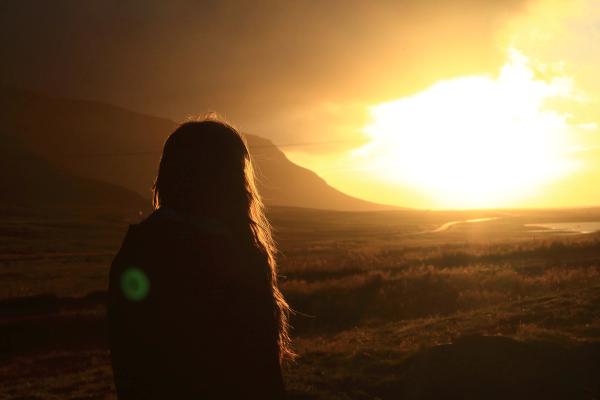
Best Times to See the Midnight Sun
The Midnight Sun isn't year-round. Here's when you can experience it in Iceland:
May: The Beginning
By early May, days are already getting longer, with sunrise around 5 AM and sunset near 10 PM. As the month goes on, days stretch even more, with the sun rising as early as 3:30 AM and setting as late as 11:30 PM by the end of May. The sky never gets completely dark, keeping a twilight glow even during "night" hours.
June: Peak Midnight Sun
June offers the full Midnight Sun experience, especially around June 21 (summer solstice). During this time, the sun barely dips below the horizon anywhere in Iceland. In Reykjavik, the sun rises around 3 AM and sets just after midnight, but the sky stays bright with twilight during those few "dark" hours.
In northern Iceland, the sun doesn't set at all for several weeks in June, giving you constant daylight.
July: Extended Light
July still gives you long daylight hours, with the sun rising between 3:30 AM and 4:30 AM and setting between 10:30 PM and 11:30 PM. While not as extreme as June, you still get plenty of time for activities at any hour.
August: Fading Light
By August, daylight hours start to decrease noticeably, with the sun rising later (around 5 AM to 6 AM) and setting earlier (between 9 PM and 10 PM). The full Midnight Sun effect is fading, but you'll still enjoy much longer days than most places in the world.
For the complete Midnight Sun experience, try to visit between mid-June and early July. However, late May and most of July offer nearly the same extended daylight with possibly fewer tourists than during peak season.
Top Activities to Enjoy Under the Midnight Sun
The endless daylight opens up unique ways to experience Iceland's natural wonders. Here are some of the best ways to take advantage of the Midnight Sun:
Sightseeing Without Crowds
Use the late-night hours to visit popular spots when day-trippers have left. Places like Seljalandsfoss waterfall, the Geysir geothermal area, or Jökulsárlón glacier lagoon look magical under the Midnight Sun, and you might have them almost to yourself.
The Golden Circle route is perfect for Midnight Sun exploration. Fewer crowds and golden light make for a completely different experience than during regular daytime hours.
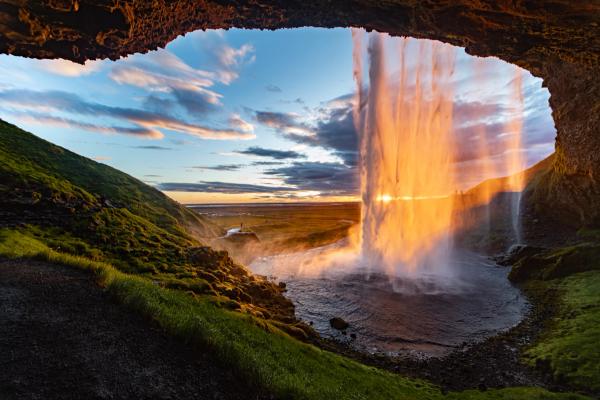
Midnight Hiking
With no darkness to worry about, hiking at "night" becomes a special adventure. Try the colorful mountains of Landmannalaugar, the coastal paths in the Westfjords, or trails around Lake Mývatn in North Iceland.
One particularly awesome hike is to Glymur waterfall, Iceland's second-highest waterfall. The trail takes you through a cave and across rivers, all easy to navigate thanks to the constant light.
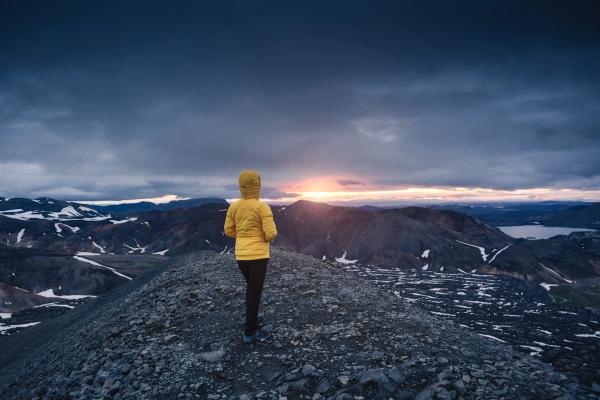
Photography
The Midnight Sun creates ideal conditions for taking photos. The never-ending golden hour light is perfect for landscape shots, while the unique conditions let you take creative photos that would be impossible at other times of year.
For stunning photos, head to spots like Reynisfjara black sand beach, where the Midnight Sun creates dramatic shadows against the basalt columns, or Diamond Beach, where ice chunks on black sand glisten under the low-hanging sun.
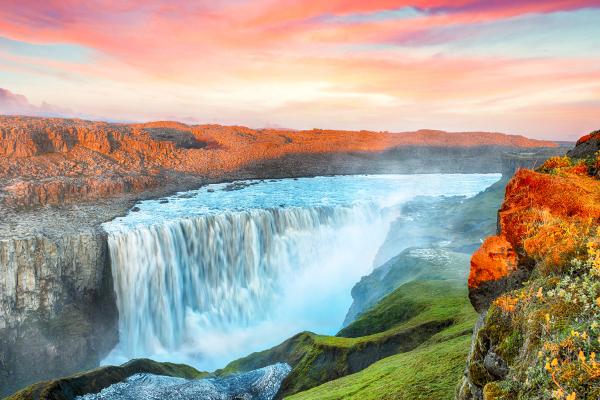
Midnight Sun Tours
Many companies offer special Midnight Sun tours that take full advantage of the extended daylight. Consider options like:
- Midnight whale watching from Husavik or Reykjavik
- Evening horseback riding across lava fields
- Late-night glacier walks
- Midnight kayaking in the fjords
These guided trips often include local insights about how Icelanders celebrate and use the Midnight Sun.
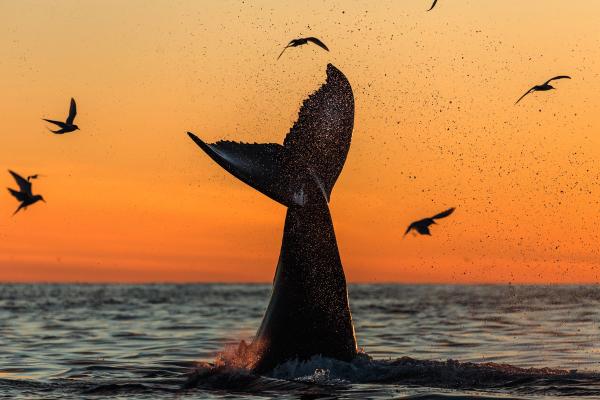
Relaxing in Hot Springs
There's something special about soaking in a hot spring under the Midnight Sun. While the Blue Lagoon and Sky Lagoon close before midnight, natural hot spots like the Reykjadalur hot spring river or Landmannalaugar hot springs are accessible anytime, offering a surreal bathing experience under the golden sky.
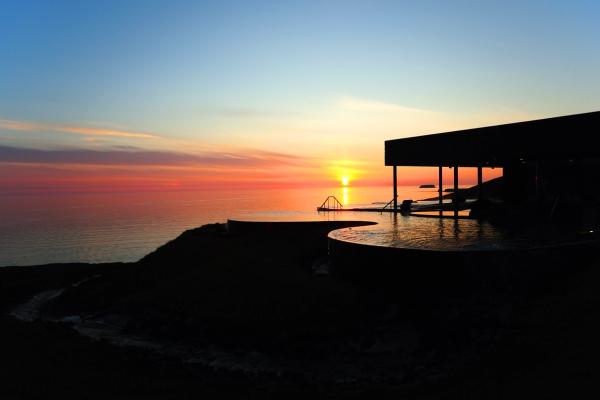
Where to Experience It
While you can see the Midnight Sun throughout Iceland, some places offer particularly spectacular views:
Reykjavik and Southwest Iceland
Even in the capital, you'll experience the Midnight Sun effect. Head to the Grotta lighthouse or Mount Esja for panoramic views of the sun touching the horizon before rising again. The sun does technically set briefly in Reykjavik during the peak period, but the sky stays bright with twilight.
North Iceland
For the most dramatic Midnight Sun experience, head north to places like Akureyri, Húsavík, or the Westfjords. In these locations, the sun truly doesn't set during the peak period.
Grimsey Island, which crosses the Arctic Circle, offers the most extreme Midnight Sun experience in Iceland. Here, the sun doesn't set at all for several weeks around the solstice.
Scenic Viewpoints
Certain locations provide particularly dramatic settings for the Midnight Sun:
- Kirkjufell mountain on the Snæfellsnes Peninsula
- Dyrhólaey arch near Vik
- Dettifoss waterfall in North Iceland
- The highland areas of Landmannalaugar or Þórsmörk
Most of these locations are accessible by regular car, though some highland areas require 4WD vehicles. Tour companies also offer Midnight Sun excursions to these spots if you prefer not to drive.
Practical Tips for Travelers
Experiencing the Midnight Sun takes some preparation to make the most of this natural phenomenon:
Sleep Management
While the constant daylight is great for exploring, it can affect your sleep. Most accommodations in Iceland come prepared with blackout curtains or blinds, but bringing a sleep mask is still a good idea.
Still, some people find their energy levels and body clock affected by the lack of darkness, so plan for possible adjustment time.
Packing Essentials
Even with 24-hour daylight, Iceland's weather remains unpredictable. Pack:
- Layers for temperature changes (even summer nights can be cool)
- Good sunglasses (the constant sunlight can strain your eyes)
- Sunscreen (the extended sun exposure can lead to unexpected sunburn)
- A light hat and gloves (useful for midnight hikes or boat trips)
- A sleeping mask
Trip Planning
The Midnight Sun period matches Iceland's high season, so:
- Book accommodations and car rentals at least 3-6 months ahead
- Reserve popular tours early, especially those marketed as Midnight Sun experiences
- Consider scheduling activities during traditional "night" hours to avoid daytime crowds
- Plan for higher prices in June and July compared to the shoulder seasons
Health Considerations
The constant daylight can affect your body in unexpected ways:
- Stay hydrated, as it's easy to lose track of time and spend more hours active than normal
- Schedule some downtime despite the temptation to go non-stop
- Listen to your body and don't push too hard
Local Etiquette
Icelanders have lived with the Midnight Sun for generations and have adapted to it. Remember:
- Respect quiet hours in residential areas, even if it's light outside
- Many locals use the extended daylight for gardening, fishing, or socializing—don't be surprised to see plenty of activity at unusual hours
- Some restaurants and shops extend their hours during this season, but not all—check opening times rather than assuming places will be open late

Conclusion
Experiencing the Midnight Sun in Iceland is truly a bucket-list adventure. The mix of Iceland's otherworldly landscapes with the golden light of the never-setting sun creates memories that last a lifetime.
Whether you're hiking across lava fields at midnight, photographing waterfalls at 2 AM, or simply enjoying the weird feeling of brightness when your watch says it should be dark, the Midnight Sun adds an extra layer of magic to an already spectacular destination.

